Comparing the American Southwest to colder, wetter areas in November is an interesting study. While much of the country is bundling up to endure months of winter, the Southwest is embracing this welcome cooling to enjoy outdoor living. No matter if you are still wearing shorts or now putting on a sweater, it's time to enjoy and refine our gardens!
The dry Southwest is divided into three zones of overall and extreme temperatures:
- Low zone: The hottest areas with no winter; includes Phoenix, Arizona; Palm Springs, California; Laughlin, Nevada; and Yuma, Arizona (USDA zones 9 to 10)
- Middle zone: Hot with little winter; includes Tucson, Arizona; warm areas of Las Vegas, Nevada; Barstow, California; and Lajitas, Texas (USDA zones 8 to 9a)
- High zone: Moderately hot with short, definite winters; includes El Paso, Texas; Albuquerque, New Mexico; Payson, Arizona; Bishop, California; and Saint George, Utah (USDA zones 6b to 8a)
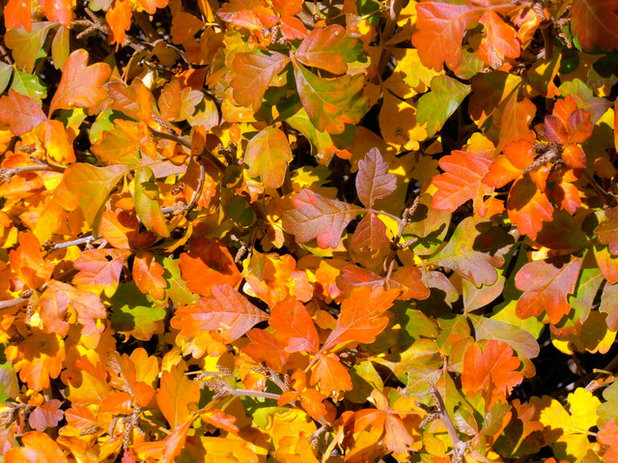
Waterwise Landscapes Incorporated
Fall planting by region. The following can be planted in November in each Southwestern zone.
Low zone: Finish planting more frost-sensitive plants such as
bougainvillea,
citrus and
ficus before Thanksgiving.
Overseed warm-season lawns with annual or winter ryegrass early in November.
Wait until spring to plant all but the hardiest palms, such as
desert fan palm (
Washingtonia filifera) or
Mexican blue palm (Brahea armata). Installation of typically hardy native and adapted plants is fine all month.
Medium zone: Start thinking about creating the restorative feel of a resort on your property; there is still time to make finishing touches and establish any plantings to create that for your winter visitors. Plant cold-hardy palms now, plus any native and adapted plants, including wildflowers, herbs and cool-season vegetables. This includes
fan palm (Washingtonia) and
Mexican grass tree (Dasylirion quadrangulatum).High zone: November is an optimum time to plant spring bulbs such as
tulips and
daffodils. Continue to plant hardier woody plants and succulents such as
three-leaf sumac (Rhus trilobata) or
Texas sotol (Dasylirion texanum), though most cacti and tender plants should wait until spring. Take a cue from what you can now see many landscape contractors installing — and
not installing.
Shown: Three-leaf sumac
(Rhus trilobata)
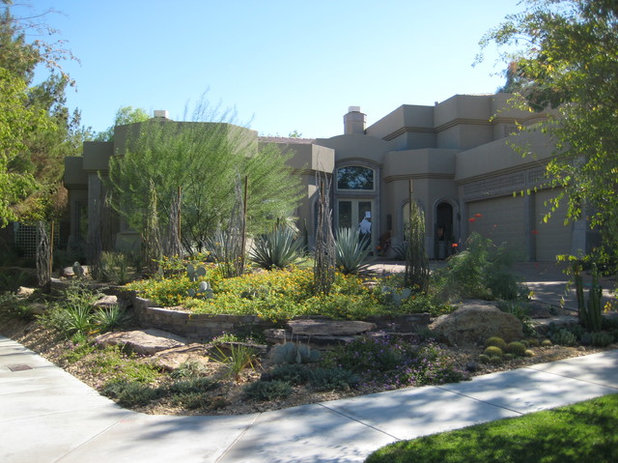
Sage Design Studios, Inc.
Learn to discern. Spend time learning what's on your property. First, observe which plants are not in their space, which ones are, and which could be, if their potential was realized.
Removal of young volunteer plants, often smaller than a thumb, can mean no spring wildflower show.
Desert marigold (Baileya multiradiata) is often sprayed or pulled from areas it could really benefit, such as expanses of gravel or soil without plants. Instead, imagine a carpet of golden wildflowers in the spring there. But if it's a weed that will take away from appearances and other plants' soil moisture, remove it.
Also, spend time familiarizing yourself with any landscape lighting, irrigation or water features, and what should be done to prepare them for winter.
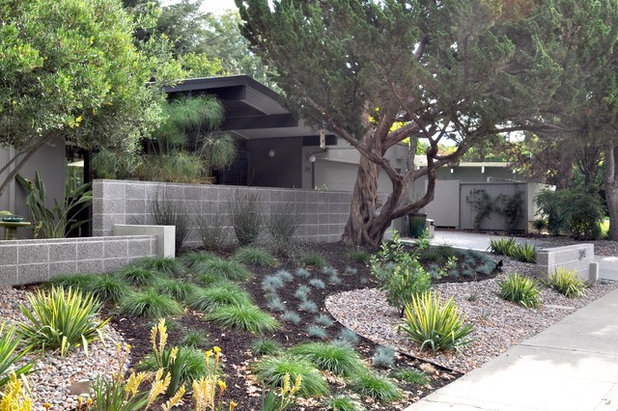
Huettl Landscape Architecture
Winter preparation. Ensure plantings have optimum moisture in their root zones, based on the species. Going into winter most plants other than cacti are less likely to be damaged during severe cold periods if they are properly irrigated. Maintain light to moderate moisture in their root zones and plant tissues.
After inspecting all irrigation systems for proper function, top off any thin areas of mulch with the proper depth, according to mulch type.
- 2 inches is adequate for inorganic mulches, such as decomposed granite and other gravel.
- 3 inches is adequate for organic mulches in more lush plantings, such as shredded wood and pecan shells.
In many cases, inorganic mulches wash to other areas over time. If you spot areas where the mulch depth is significantly over 2 inches, move and balance to cover thinner areas.
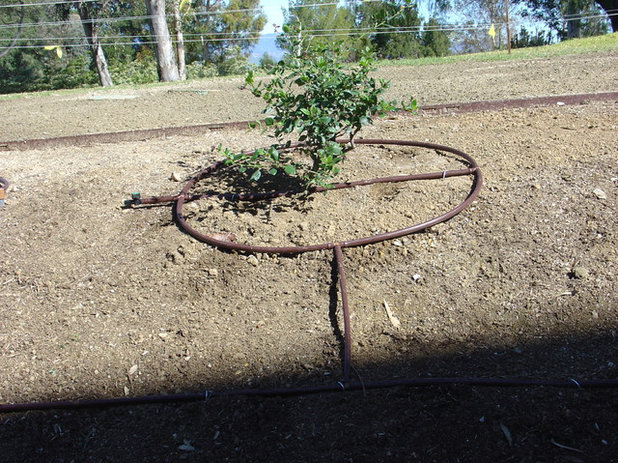
Atomic Irrigation
Watch that water. Winter is when overwatering often causes damage to arid-region plantings. If your area is getting near or below 32 degrees Fahrenheit, the freezing point, the best practice is to adjust timing: Do not start watering until the temperature tends to be above 45 or 50 degrees Fahrenheit.
Of course, always seek out ways to get the most results from less water. When I hear property owners ecstatic over how they are irrigating only three times a week, and their landscape is not brand new, I am concerned they are overwatering.
If that high frequency of watering is noted in late fall, I am even more concerned. Water is too precious in the desert for that, and nobody should want to spend money on something that often has wide ranging, negative results.
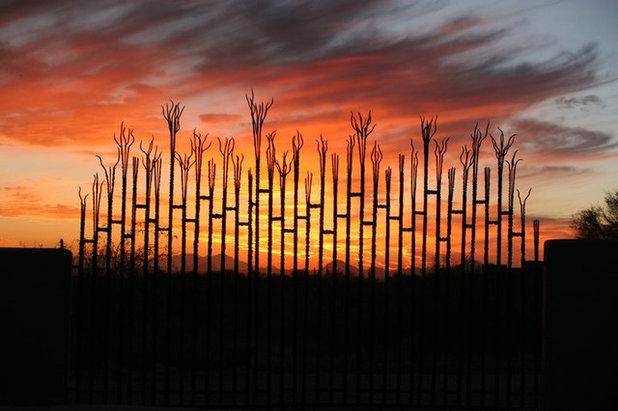
BOXHILL
See the views. Even with shorter days, our often spectacular evening and dawn skies beg to be seen and flaunted. Look for spots where you could spend time enjoying those times of day, which are when many of us are awake, going to and from work or having guests over for dining.
Carefully placed structural plants, walls or screen features can enhance a brilliant sunset or mountain vista.
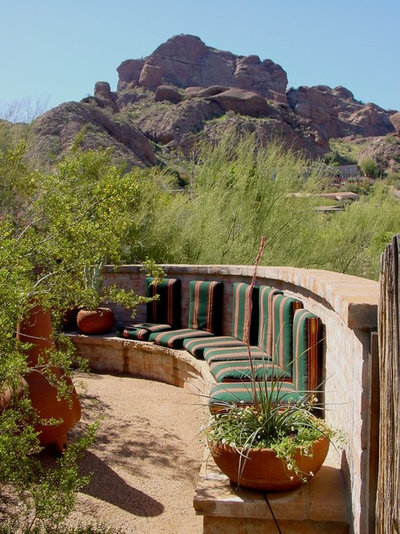
www.KarlGercens.com
Keep warm. Fire pits, outdoor fireplaces and heat lamps are obvious ways to keep warm in the winter, extending time enjoying outdoor living.
Another way to consider keeping warm in the months ahead is to use only deciduous trees near south- and west-facing walls, which will better absorb extra heat from the sun when cool, but filter the sun from the same surfaces during warmer months.
Also consider places on your property where you wish to dine and at what time of day — blocking chilly winds and absorbing sun are paramount to winter al-fresco dining.
More: Guides for your Southwest garden





